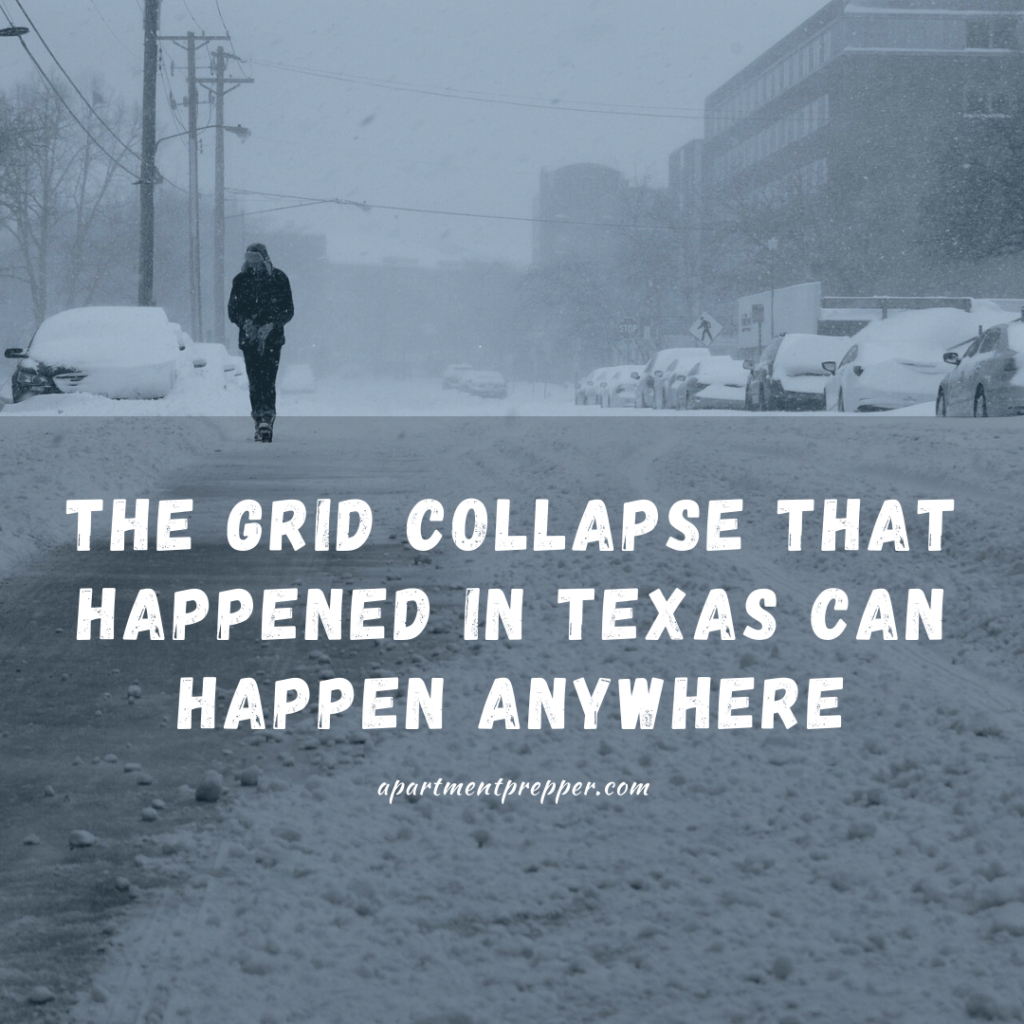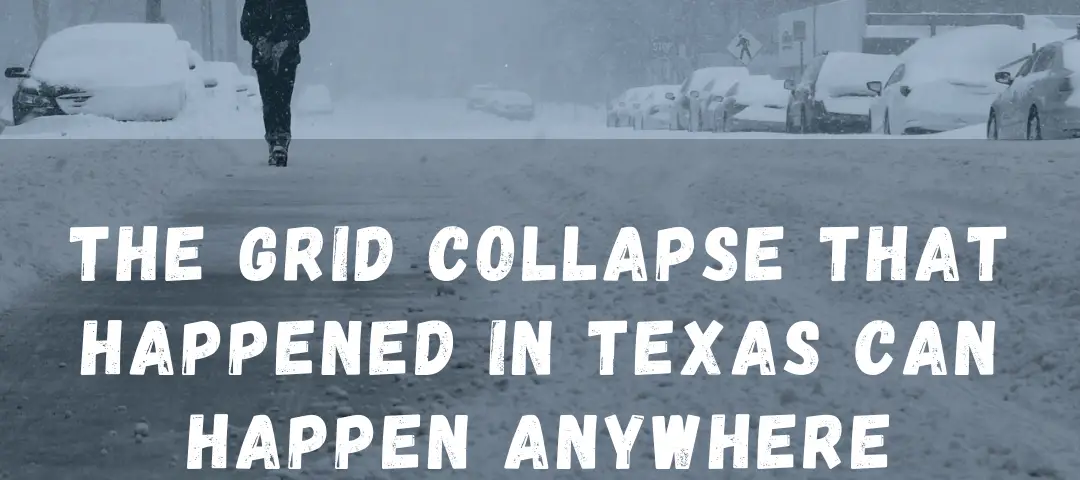Written by Bernie Carr
It’s getting close to a week since the deadly winter storm impacted the state of Texas and surrounding states. The severe storm has cause at least 30 deaths, millions of people still having power outages and now millions of people with no clean water. President Joe Biden has declared Texas in a state of emergency.
Power loss
Just when they needed it that most, residents could not heat their homes when power went out. For some who use natural gas, their gas service also went out.
According the The Texas Tribune:
“Texas’ power grid was “seconds and minutes” away from a catastrophic failure that could have left Texans in the dark for months, officials with the entity that operates the grid said Thursday.
As millions of customers throughout the state begin to have power restored after days of massive blackouts, officials with the Electric Reliability Council of Texas, or ERCOT, which operates the power grid that covers most of the state, said Texas was dangerously close to a worst-case scenario: uncontrolled blackouts across the state.”Source: The Texas Tribune
As temperatures plummeted, people died from the extreme cold: a sixth grade boy was found dead huddled in his blanket in an unheated mobile home, a man was found dead sitting in his recliner, and many others.
To keep warm, some people brought barbecue grills indoors. Running gas or charcoal barbecues indoors causes carbon monoxide poisoning. Sadly several people died from this.
Water loss
The severe cold caused pipes to freeze. Once water freezes, it expands. As soon as temperatures go up even slightly, they cause pressure on water pipes and they burst, causing many homes to flood. The water became unsafe to drink in many areas, with many cities declaring a “boil water” order.
People had to resort to melting snow for drinking water. Some residents had to gather water from swimming pools or nearby waterways to flush their toilets.
To avoid pipes from freezing, one piece of advice is to turn on the faucet and keep water at a trickle. The idea is if water is running, it is less likely to freeze. Unfortunately, as soon as water became scarce, the major of Houston advised residents to turn off the faucets to avoid wasting water, as it was needed by hospital and emergency services. Talk about being stuck between a rock and hard place!
Cash only purchases
Many stores shut down as soon as power went out. According to friends, some grocery stores that stayed open could only accept cash, as electronic payment was not available.
Gasoline shortage
After the initial cold snap, many people went to fill up their gas tanks and found long lines going several blocks around gas stations. As the supply got depleted, gas stations were unable to get restocked. Many gas stations shut down. Trucks are unable to get through without gas, and in turn are unable to proceed.
Food shortages
As trucks are unable to deliver to stores, grocery shelves have become depleted. Because of “just in time” delivery systems, stores only carry as much as trucks deliver. Whatever sits on the shelf and gets delivered is the extent of inventory. There is no back room where extra inventory can be restocked from.
Another alarming result of the disaster in Texas is a possible shortage for the rest of the country of goods produced in Texas such as meat, eggs, grains and produce. Chickens froze to death, eggs and milk awaiting delivery to stores had to be discarded due to no refrigeration and no truck pickup. This may result in shortages or higher prices for food.
Pets abandoned
Another sad result of the disaster is the high number of pets being abandoned by owners. A pet emergency kit is crucial to have in a disaster.
According the The Daily Mail:
Six dogs were left outside of an unnamed auto body shop in Southwest Houston on Monday, including one that was found dead and partially covered in snow, the Houston Society for the Prevention of Cruelty to Animals (SPCA) has revealed.
Officers with the Houston Police Department Major Offenders and the Houston SPCA also found an emaciated dog on the property. Temperatures at the time registered in at 18 degrees.
Source: The Daily Mail
Hospital services were hampered
Hospitals also suffered during the power and water loss at the height of the crisis. With lack of water and electricity, hospitals scrambled to maintain care for patients. Now that utilities have been restored, some hospitals are dealing with a backlog of patients, such as dialysis patients who were unable to obtain care from closed outpatient facilities.
In an extreme emergency such as this, you may be on your own for a while, necessitating a comprehensive first aid kit in the home.
Aging infrastructure
Texas may be in focus at the moment due to the ongoing disaster, but it is not the only state with an aging power grid and infrastructure. Last summer, California had rolling blackouts as electricity providers were forced to cut power due to demand from a severe heat wave. Flint, Michigan had a water disaster just a few years ago.
According to Popular Science,
“According to one analysis, the United States has more power outages than any other developed country. Research by Massoud Amin, an electrical and computer engineer at the University of Minnesota, found that while people living in the upper Midwest lose power annually for an average of 92 minutes, those in Japan experience only 4 minutes of blackouts per year. In a comparison by the Galvin Electricity Initiative, the average utility customer in the U.S. spent more time with their lights out than eight other industrial countries.
On top of that, utility companies have been slow to perform crucial maintenance, let alone upgrade their systems. Trees are to blame for most outages: high winds send their limbs swinging into lines. In forested places, utility providers are on the hook to trim back boughs so they don’t become a hazard in windy and stormy weather. It seems straightforward, but where there’s a lot of vegetation this can be a big ask. In forested areas, “The single biggest cost [for electric utilities] is tree maintenance,” says B. Don Russell, an electrical engineer at Texas A&M University.”
Extreme weather
According to the Environmental Protection Agency (EPA), extreme weather, such as tropical storms, drought, flooding, increased precipitation, record high and low temperatures have become more common in the last 20 years.
Long-term changes in climate can directly or indirectly affect many aspects of society in potentially disruptive ways. For example, warmer average temperatures could increase air conditioning costs and affect the spread of diseases like Lyme disease, but could also improve conditions for growing some crops. More extreme variations in weather are also a threat to society. More frequent and intense extreme heat events can increase illnesses and deaths, especially among vulnerable populations, and damage some crops. While increased precipitation can replenish water supplies and support agriculture, intense storms can damage property, cause loss of life and population displacement, and temporarily disrupt essential services such as transportation, telecommunications, energy, and water supplies.
Source: EPA.gov
No matter what the cause happens to be, it seems that weather extremes are sure to affect all of us at one time or another.
The final word
As we can see, one disaster can lead to many others, as a domino effect ensues. All this pain and misery is happening on top of the pandemic that is still ongoing.
Even people who have been preparing for a while are realizing they have much to improve. What would happen if such a disaster where to hit your region? No power, no heat, no water and now no groceries. If an unexpected natural disaster can easily cripple the infrastructure of a huge prosperous state, a disaster of this magnitude can happen anywhere. We should all take steps to be more prepared.
About the author:
Bernie Carr is the founder of Apartment Prepper. She has written several books including the best-selling Prepper’s Pocket Guide, Jake and Miller’s Big Adventure, The Penny-Pinching Prepper and How to Prepare for Most Emergencies on a $50 a Month Budget. Her work appears in sites such as the Allstate Blog and Clark.com, as well as print magazines such as Backwoods Survival Guide and Prepper Survival Guide. She has been featured in national publications such as Fox Business and Popular Mechanics. Learn more about Bernie here.



Good article. I’ve always thought that ENERGY was a great thing to stockpile — flashlight batteries, gasoline, kerosene, propane, firewood, fuel oil, cooking gas, solar panels, 12-volt marine batteries, 91% rubbing alcohol, charcoal, anthracite coal . . . You can use those things directly. Or you can barter with them. But ENERGY inputs in some form are a necessity. You can’t live without energy . . .
Hi Ron, Those are all great additions to the stockpile. Energy is so crucial. Thanks for the comment!